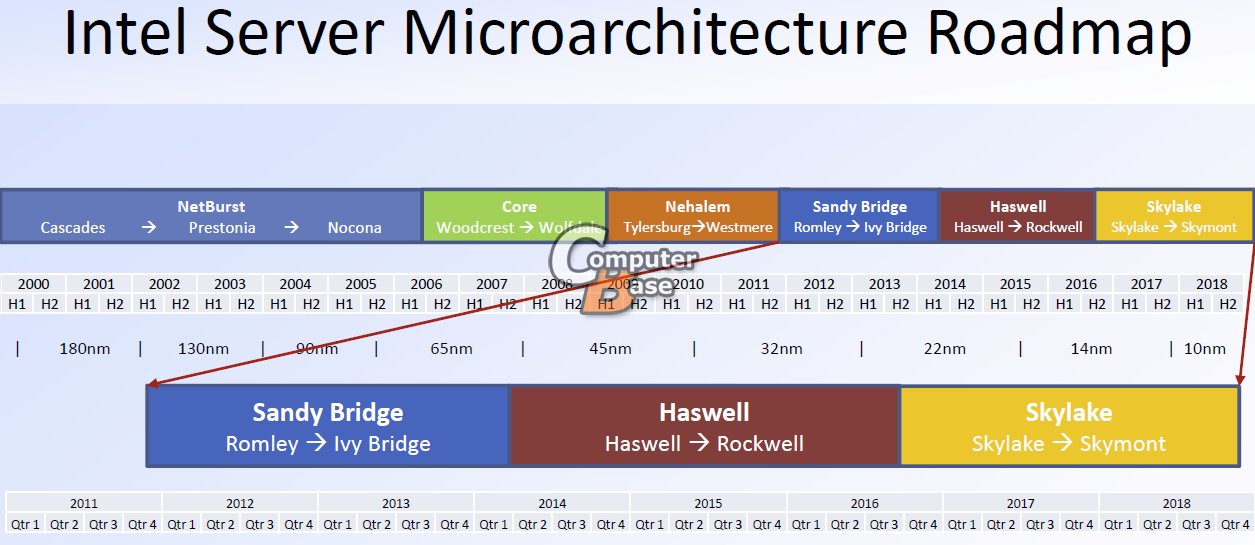We have acquired a piece of gold, a roadmap for Intel’s coming microarchitectures up until 2017. It looks like the Tick-Tock strategy will continue, which was expected, but as you might have noticed Intel hasn’t quite managed to keep up with the high paced schedule, although it is still leading the market.
Intel is leading the x86 market and when we look at its manufacturing technologies it is going into 22nm next year, while the rest is still migrating to 28/32nm. What we have today is a roadmap for Intel’s server processors of the Xeon series that is traditionally one year behind the desktop and mobile processors.
Intel is about to introduce Sandy Bridge for servers, which in 2012 will be followed by Ivy Bridge that is basically the same architecture at 22nm and more cores.
During the first half of 2014 Intel is planning to release Haswell that will be the next big architecture update from Intel with new instructions like AVX2. Haswell was first intended to house a graphics circuit based on the now scrapped ”Larrabee”, but Intel still claims to have an ace up its sleeve, as it has promised that you will not need a discrete graphics card with Haswell in notebooks.
After Haswell we have Rockwell at 14nm that will largely use the same architecture as Haswell, but once again with more cores and functions, and is slated for the second half of 2015. We still know very little about Haswell and less about Rockwell, the only thing we can say is that we will see more instructions, powerful graphics and stronger cores.
Last but not least we two whole new code names. Skylake will appear in the second half of 2016 built on 14nm and a new architecture from Intel. Skymont comes in the true Tick-Tock spirit be based on Skylake but use 10nm technology, and will be released in the second half of 2017. We know what’s coming after Skymont and what may come after 2018 is so far into the future perhaps not even Intel knows for sure what to expect.
Those who are not interested in servers we can add that Intel usually releases the server platforms one year after the retail products. With all the years above you can simply deduct 1 year to get the approximate launch of the retail products.
Source: ComputerBase





